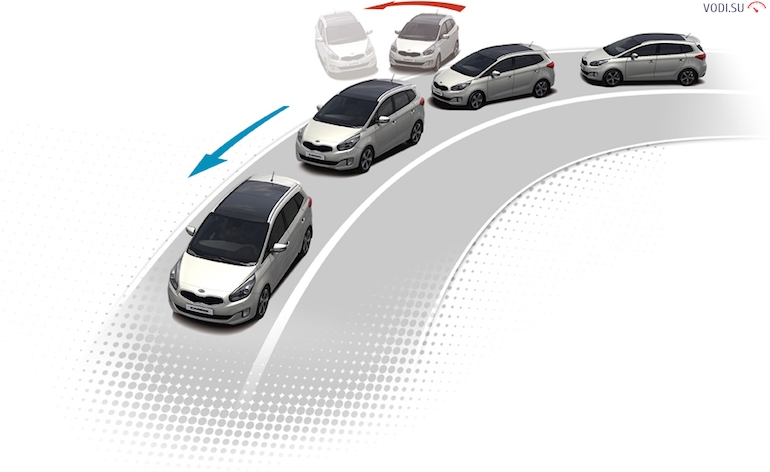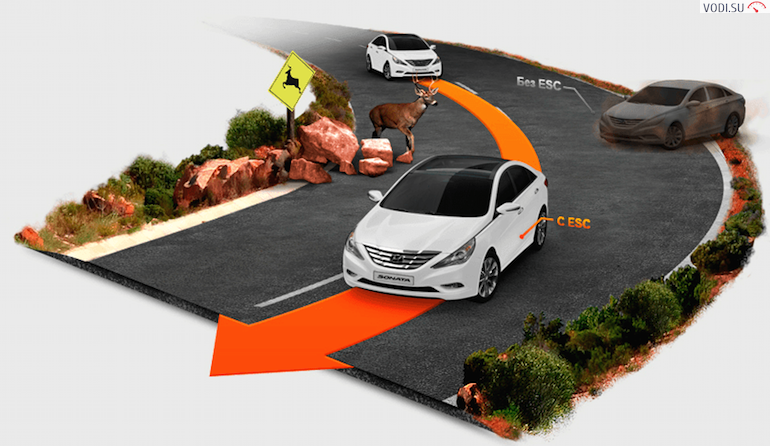
what it is? Video, reviews
One of the most important inventions in the field of auto safety, after the invention of three-point belts, is called the system of exchange rate stability, or ESC. Its significance is so great, and thanks to it the number of accidents has decreased so much that in many countries - the EU, the USA, Australia, Canada, Israel - it has become mandatory for installation on new cars.
To briefly formulate the purpose of ESC, we can say that the main task is to ensure that the car moves exactly in the direction in which the steering wheel is turned. That is, it allows you to keep the car within the trajectory that the driver sets. Accordingly, if your car is equipped with it, there will be fewer situations in which the car can go into a skid, roll over, or not fit into a sharp turn.
It is also worth saying that each manufacturer uses its own abbreviation. So, ESC is used for Korean-made cars: Kia, Hyundai, and Honda. Almost all European and American cars use the abbreviation ESP, which we already wrote about on our website Vodi.su. Toyota uses the abbreviation VSC.
It is worth saying that the name is not displayed in any way on the functionality. In addition, electronic stability control has proven to be highly effective, making it an indispensable element of the safety system.

Устройство
Another name for ESC is Electronic Stability Control (ESC).
In principle, other assistants are included in its composition:
- anti-lock brakes;
- distribution of braking forces;
- anti-slip;
- differential lock.
The most important components are:
- Control block;
- valve body;
- sensors.
Numerous sensors record the characteristics of the movement of the vehicle and the operation of its various units: brake fluid pressure, steering angle, crankshaft position; plus to this: angular velocity, wheel speed, acceleration and so on.

All this information is fed to the electronic control unit, where it is compared and analyzed according to complex algorithms and programs. On this basis, the ECU analyzes how much the car deviates from the set course at any given time. If such a deviation is fixed, pulses are sent to the hydraulic unit, and from it to the ABS or traction control valves.
If necessary, ESC connects other units: injector, transmission, suspension. Thanks to this approach, the car follows the calculated trajectory. It is clear that the driver feels more relaxed behind the wheel.
Operating principle
When analyzing the current situation, the ESC control unit compares what actions the driver resorts to and how the car reacts to it. For example, if a motorist turns the steering wheel at a certain angle to fit into a turn, and the car describes a wider arc, entering the oncoming lane, various actions are taken:
- some of the wheels are slowed down;
- increasing or decreasing torque;
- the angle of rotation of the wheels changes.
All this happens due to the transmission of signals to various vehicle systems. So, if your car is equipped with an adaptive suspension, reducing roll or avoiding skidding on a turn can be achieved by changing the stiffness of the shock absorbers.

Braking occurs due to the transmission of impulses to the hydraulic valves associated with the main brake cylinder, respectively, the pressure in the system either rises or falls, depending on the traffic situation. Also, the speed decreases due to the fact that the engine management system reduces torque or changes the throttle opening angle.
ECU has other useful features:
- prevents overturning;
- prevents collisions with other cars or fixed objects;
- improves the efficiency of the brakes;
- stabilization of a road train.


Watch this video on YouTube
Loading…